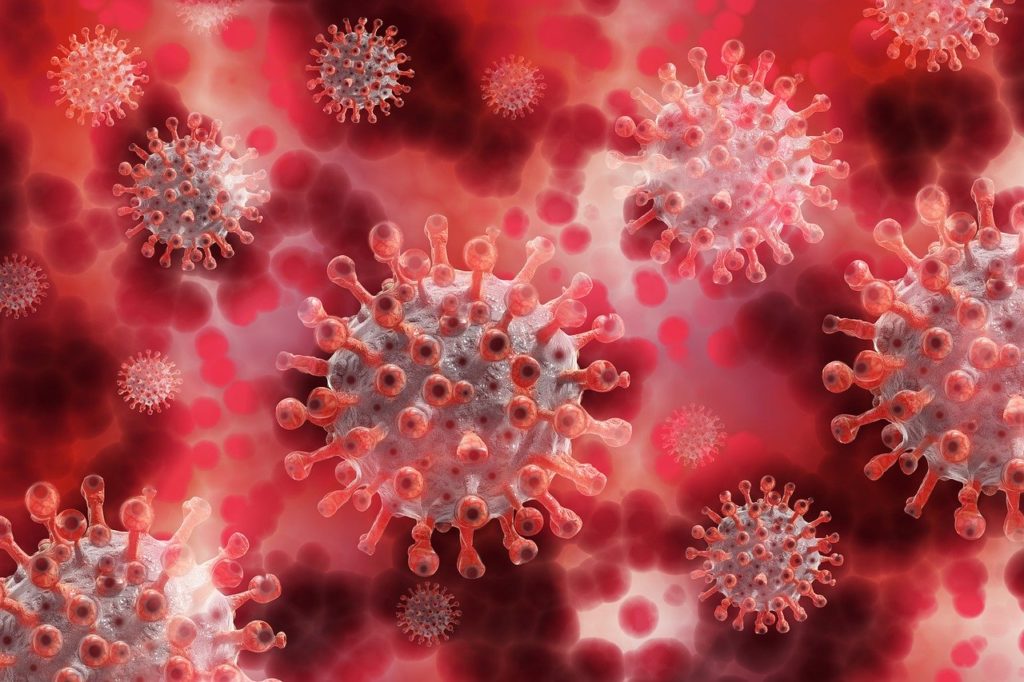Knowledge about the novel coronavirus is ever-changing and quick moving, much like the virus itself. While there is still much scientists do not know, here is the key information that has been uncovered about the virus thus far.
The virus:
“Coronaviruses are a large family of viruses which may cause illness in animals or humans. In humans, several coronaviruses are known to cause respiratory infections ranging from the common cold to more severe diseases such as Middle East Respiratory Syndrome (MERS) and Severe Acute Respiratory Syndrome (SARS). The most recently discovered coronavirus causes coronavirus disease COVID-19,” explains the World Health Organisation (WHO).
The SARS-CoV-2 virus particle enters the body through the mouth or nose. The virus is made up of a protein inside a fatty membrane that protects an RNA molecule strand which holds the virus’s genetic code. The proteins form spikes that extend off the surface and attach to human cells to allow it to enter them, where it then forms new virions.
The SARS-CoV-2 genome is about 9,900 bases long, making it easy for mutations to occur. In May, it was reported that scientists identified 198 genetic mutations to the SARS-CoV-2 strain. Professor Francois Balloux from University Collge London (UCL) says that all viruses naturally mutate, but they cannot tell yet whether these mutations make COVID-19 more or less dangerous or have a neutral impact. Most virus mutations, however, are not dangerous, and experts warn the public not to take them as a bad sign.
Once it brushes against a lung cell with an ACE2 receptor on the surface, the virus binds to that cell, enters it and replicates itself. It then leaves the cell and begins penetrating and infecting others, and even kills some healthy cells. Once infected, the majority of people begin to display symptoms related to respiratory illness.
According to the Center for Disease Control (CDC), symptoms of the coronavirus include:
– Fever or chills
– Cough
– Shortness of breath or difficulty breathing
– Fatigue
– Muscle or body aches
– Headache
– New loss of taste or smell
– Sore throat
– Congestion or runny nose
– Nausea or vomiting
– Diarrhoea
Symptoms may appear 2-14 days after exposure to the virus. Most people infected with the COVID-19 virus will experience mild to moderate respiratory illness and recover without requiring special treatment. Older adults and people who have severe underlying medical conditions like heart or lung disease or diabetes seem to be at higher risk for developing more serious complications from COVID-19 illness.
The stats:
WHO first reported on a cluster of pneumonia cases in Wuhan City, China on December 31, 2019. Since then, there have been 10 834 211 confirmed cases globally, of which 6 054 008 people have recovered and 519 582 have died. COVID-19 is affecting 213 countries and territories around the world and two international conveyances.
Countries with the most confirmed cases are the United States of America (2 780 152 cases), Brazil (1 453 369) and Russia (661 165 cases). Thus far, New Zealand, Fiji and Barbados are COVID-19 free. There are 12 countries that have not confirmed any cases of COVID-19, the majority of which are Pacific Island countries in Oceania. These include Samoa, Solomon Islands, Tonga and North Korea.
In South Africa, the cumulative number of confirmed COVID-19 cases is 159 333, the total deaths is 2749 and the total number of recoveries is 76 025 as of July 1.
Vaccines:
According to the World Health Organisation, there are currently 17 potential vaccines in human trials, and 132 in pre-clinical trials. Positive lab results have made the vaccines by AstraZeneca and Moderna the front runners. The vaccines target different aspects of the virus through various strategies.
Vaccines work by exposing the immune system to a safe version of the virus and thus kicking off the immune response, which will prepare the immune system to be able to fight off future infection.
Most drugs currently available to treat the virus cannot destroy it completely but rather interfere with it enough to clear infection. The drug, dexamethasone, is a low-dose steroid and could potentially be a major breakthrough in the fight against coronavirus, according to a study from Oxford University.
Dexamethasone is most commonly used as an anti-inflammatory medication to decrease swelling associated with tumours of the spine and brain. It is also used to treat or prevent allergic reactions and reduce swelling in the eyes.
Also read: WHO warns the worst of the pandemic is yet to come
Also read: The daily diary of a COVID-19 patient
Picture: Pixabay

